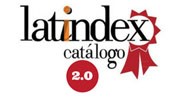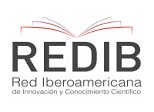Competencia Lectora de los Estudiantes que Ingresan a la Secundaria en la Unidad Educativa Fiscomisional Sagrado Corazón
DOI:
https://doi.org/10.69890/hallazgos21.v4i3.362Palabras clave:
nivel de lectura; comprensión; texto; Prueba CompLEC.Resumen
El presente estudio tuvo como propósito conocer el nivel de lectura que tienen los 96 estudiantes aspirantes a ingresar al Octavo Año de Básica Superior de la Unidad Educativa Fiscomisional Sagrado Corazón; para ello, se utilizó la Prueba de Competencia Lectora (CompLEC), que en su diseño se basa en el esquema de evaluación del Programa Internacional de Estudiantes (Programme for International Student Assessment, PISA); que representa instrumentos válidos internacionalmente y que tiene como propósito evaluar los niveles de conocimientos y competencias básicas para el desempeño de las aptitudes para lectura, matemáticas y ciencias entre estudiantes, escuelas y países. Ante los resultados de la aplicación de la prueba CompLEC se determina que los estudiantes alcanzaron un promedio de 5,3/20 demostrándose un nivel deficiente en el desarrollo de competencias lectoras, especialmente en la competencia de recuperar información, lo que indica la falta de desarrollar habilidades lectoras que permita a los estudiantes hacer procesos de comprensión de los textos en función de los niveles de lectura. Se hizo además evidente la necesidad de que los profesores que trabajan los procesos de lectura doten a los estudiantes de herramientas que fortalezcan la comprensión de un texto.
Citas
Catalá, G. (2007). Evaluación de la comprensión lectora. Barcelona: Graó.
Condemarín, M. (2010). Comprensión Lectora. Chile: Andrés Bello.
Duarte, R. (2012). La enseñanza de la lectura y su repercusión en el desarrollo del comportamiento lector (Tesis Doctoral). Universidad de Alcalá. Madrid.
Ministerio de Educación del Ecuador. (2011). Ley Orgánica de Educación Intercultural Bilingüe. Registro Oficial N 417. Quito, Ecuador.
Instituto Nacional de Evaluación Educativa. (2018). Educación en Ecuador. Resultados de PISA para el desarrollo. Recuperado de https://www.evaluacion.gob.ec/wp-content/uploads/downloads/2018/12/CIE_InformeGeneralPISA18_20181123.pdf
Llorens, A., Gil, L., Vidal, E., Martínez, T., Mañá, A., & Pérez, R. (2011). Prueba de Competencia Lectora para Educación Secundaria CompLEC. Psicothema, 808-817.
Mendoza, E. (2004). El intertexto lector: el espacio de encuentro de las aportaciones del texto con las del lector. Cuenca: Ediciones de la Universidad de Castilla - La Mancha.
Ministerio de Educación y Cultura.(2008). Guía para la interpretación de resultados, Pruebas Ser Ecuador, 2008. Recuperado htt.pp/ARTICULO/resultadoPruebasWEB(1).pdf. Quito. Ecuador.
Solé, L. (2006). Estrategias de Lectura. Barcelona: Graó.
Snow, C. (2002). Reading for understanding: Toward an R&D program in reading comprehension. EUA: Rand Corporation. Recuperado de http://www.rand.org/content/dam/rand/ pubs/monograph_reports/2005/MR1465.pdf
Vallés, A. (2005). Comprensión Lectora y Procesos Psicológicos. Liberabit Revista Psicológica, 49-61.
Zabala, A. (2000). La práctica educativa. Cómo enseñar. España: Graó.
Publicado
Cómo citar
Número
Sección
Licencia
Los artículos enviados a la Revista Científica Hallazgos21 deberán ser totalmente originales e inéditos.
Los autores son los responsables de los textos y las imágenes incluidas en los artículos y no necesariamente reflejan el pensamiento de la editorial o de la Pontificia Universidad Católica del Ecuador, Sede Esmeraldas (PUCESE).
Los autores disponen cederle a la Revista Científica Hallazgos21 todos los derechos inherentes para la edición, publicación y distribución o divulgación del mismo.
Se autoriza a las revistas firmantes de los acuerdos de Encuentros de Revistas Latinoamericanas para reproducir en parte o totalmente los artículos con la sola mención de la fuente claramente señalada.







